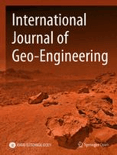
International Journal of Geo-Engineering
Scope & Guideline
Innovating solutions for the challenges of modern engineering.
Introduction
Aims and Scopes
- Geotechnical Engineering and Soil Mechanics:
The journal covers a wide range of topics related to the mechanical properties and behavior of soils, including soil stabilization techniques, strength analysis, and the effects of various additives on soil behavior. - Environmental Geotechnics:
Research on the environmental aspects of geotechnical engineering, such as the use of waste materials in soil stabilization, and the development of sustainable landfill systems, is a key focus area. - Groundwater and Hydrogeological Studies:
The journal emphasizes studies related to groundwater modeling, aquifer potential assessments, and the impact of geological formations on groundwater availability and quality. - Innovative Measurement and Monitoring Techniques:
There is a strong emphasis on the development and application of new technologies for monitoring soil behavior, ground movement, and environmental impacts, including remote sensing and machine learning approaches. - Numerical and Experimental Modeling:
The journal publishes research involving both numerical simulations and experimental studies to validate models and improve understanding of complex geo-engineering phenomena. - Stability and Risk Assessment:
Research focused on the stability analysis of slopes, foundations, and underground structures, including probabilistic and reliability assessments, is a critical area of interest.
Trending and Emerging
- Bioengineering and Sustainable Practices:
There is a rising interest in bioengineering and the use of natural materials, such as fungi and agricultural waste, for soil improvement and stabilization, reflecting a broader trend towards sustainability in engineering. - Machine Learning and Data-Driven Approaches:
The application of machine learning techniques for predictive modeling and analysis in geo-engineering is gaining momentum, indicating a shift towards data-driven methodologies for enhancing engineering practices. - Advanced Monitoring Techniques:
Innovative monitoring technologies, including remote sensing and geospatial analysis, are increasingly featured, emphasizing the importance of real-time data in understanding ground behavior and environmental impacts. - Interdisciplinary Approaches:
Research that integrates knowledge from various disciplines, such as environmental science, materials engineering, and computer science, is becoming more prevalent, highlighting the interconnectedness of geo-engineering with other fields. - Focus on Resilience and Adaptation to Climate Change:
There is an emerging emphasis on the resilience of civil infrastructure and geotechnical systems in the face of climate change, including studies on thermal response and the impact of extreme weather events on soil behavior.
Declining or Waning
- Traditional Soil Stabilization Methods:
There has been a noticeable decrease in research focusing solely on conventional soil stabilization techniques, as the field shifts towards more innovative and sustainable methods involving bioenzymes and waste materials. - Static Analysis in Isolation:
While static analyses remain important, there is a declining trend in papers solely focused on static behavior without considering dynamic or environmental impacts, as researchers increasingly integrate these aspects. - Generalized Approaches to Soil Behavior:
The journal has seen fewer studies that apply generalized approaches to soil behavior without specific contextual applications, as there is a growing preference for targeted research addressing particular soil types or conditions.
Similar Journals
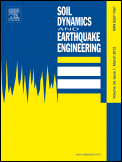
SOIL DYNAMICS AND EARTHQUAKE ENGINEERING
Innovating Solutions for Earthquake Challenges through Soil ScienceSOIL DYNAMICS AND EARTHQUAKE ENGINEERING is a premier academic journal published by ELSEVIER SCI LTD, focusing on the intersection of civil and structural engineering, geotechnical engineering, and soil science. Since its inception in 1986, the journal has established itself as a critical resource for advancing knowledge in these fields over nearly four decades, with a remarkable Q1 ranking in 2023 across multiple categories, including Civil and Structural Engineering, Geotechnical Engineering, and Soil Science. The journal’s impactful research, reflected in its high Scopus ranks, serves as a vital reference for both professionals and academics dedicated to understanding soil dynamics and mitigating earthquake hazards. Although it currently does not offer open access, the journal's rigorous peer-review process ensures that published articles provide substantial contributions to the understanding of soil behavior under seismic conditions. Whether you are a researcher, a practitioner, or a student, SOIL DYNAMICS AND EARTHQUAKE ENGINEERING offers essential insights and innovative methodologies pivotal for advancing your work in soil dynamics and earthquake engineering.

ROCK MECHANICS AND ROCK ENGINEERING
Pioneering Research in Rock Engineering ExcellenceROCK MECHANICS AND ROCK ENGINEERING, published by SPRINGER WIEN, stands as a premier journal in the fields of civil and structural engineering, geology, and geotechnical engineering. Since its inception in 1983, this journal has evolved into a leading platform for the dissemination of high-quality research, underscored by its impressive Q1 quartile rankings in multiple relevant categories as of 2023. With a significant impact factor and a ranking of 8th out of 321 in Earth and Planetary Sciences (Geology), the journal attracts scholars and practitioners aiming to contribute to and stay abreast of advancements in rock mechanics and engineering practices. While it does not offer Open Access options, its comprehensive and rigorous peer-reviewed articles serve as essential resources for fostering knowledge and innovation in the sector. The commitment to exploring the interactions between geological materials and engineering applications makes this journal indispensable for researchers, professionals, and students dedicated to pushing the boundaries of these critical fields.
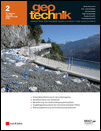
Geotechnik
Connecting Professionals through Cutting-Edge Geotechnical DiscoveriesGeotechnik, published by ERNST & SOHN, is a prestigious journal in the field of Geotechnical Engineering and Engineering Geology. With its roots tracing back to 1982 and regular publications since then, it provides a vital platform for researchers, practitioners, and students to share and disseminate cutting-edge findings, methodologies, and techniques. The journal's ISSN is 0172-6145 and the E-ISSN is 2190-6653. Notably, it has achieved a commendable Q3 category ranking in 2023, reflecting its contribution to advancing knowledge in its field, as indicated by its Scopus rank of #171 out of 229 in the Earth and Planetary Sciences category. Although it does not offer open access, the journal remains integral for professionals aiming to stay informed about current trends and breakthroughs in geotechnics. Geotechnik strives to underpin its objectives of fostering quality research and encouraging innovation within the geotechnical community, ensuring it remains a crucial resource for all stakeholders involved.
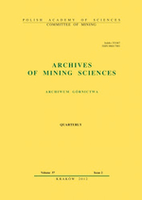
Archives of Mining Sciences
Exploring the depths of geochemical innovation.Archives of Mining Sciences is a peer-reviewed journal published by the Polska Akademia Nauk (Polish Academy of Sciences), dedicated to advancing knowledge in the fields of geochemistry, petrology, geotechnical engineering, and engineering geology. With an ISSN of 0860-7001 and an E-ISSN of 1689-0469, this journal has been a vital resource for professionals and researchers since its inception in 1991. Housed in Poland, the journal serves as a platform for the dissemination of significant research results, technical developments, and case studies, ensuring accessibility to a global audience. Competing in a rigorous landscape, it has achieved a notable Q3 ranking in 2023 within both the Geochemistry and Petrology and Geotechnical Engineering and Engineering Geology categories. As it converges through its years of publication—currently covering the period from 2008 to 2024—the journal maintains a strong focus on fostering innovative research that addresses crucial geological challenges. Its presence in Scopus rankings reinforces its commitment to quality and relevance, making it an essential read for students and professionals seeking to stay at the forefront of mining sciences.

Indian Geotechnical Journal
Bridging Theory and Practice in Geotechnical Engineering.Indian Geotechnical Journal, published by SPRINGER INDIA, is a premier publication dedicated to the cutting-edge field of geotechnical engineering and engineering geology. With an ISSN of 0971-9555 and an E-ISSN of 2277-3347, this journal serves as a pivotal platform for researchers, professionals, and students seeking to share innovative research and insights that contribute significantly to the development of the discipline. Recognized for its high-quality content, the journal holds a Q2 ranking in the Geotechnical Engineering and Engineering Geology category as of 2023, reflecting its influence and relevance in the academic community. Spanning contributions from 1972 to 1989 and resuming during 2012 to 2024, it showcases a historical depth coupled with contemporary research trends. Despite being a subscription-based journal, the quality of its articles ensures a broad readership, fostering collaboration and knowledge exchange among geotechnical professionals globally. Positioned at the intersection of theory and practice, the Indian Geotechnical Journal aims to advance understanding, encourage innovation, and address the pressing challenges faced in geotechnical engineering today.

Journal of the Korean Geosynthetic Society
Driving Excellence in Geosynthetic Applications WorldwideJournal of the Korean Geosynthetic Society, published by the Korean Geosynthetic Society, is an essential platform dedicated to advancing the field of geosynthetics, a critical area of civil engineering and environmental science. With a focus on innovative materials and applications that contribute to sustainable infrastructure and environmental protection, this journal actively encourages submissions from researchers and practitioners worldwide. Although currently not indexed by Impact Factor systems, the journal's commitment to rigorous peer-review ensures the dissemination of high-quality research and practical insights that drive the field forward. The journal publishes a range of articles including experimental studies, theoretical analyses, and case studies, making it a valuable resource for engineers, researchers, and students alike, fostering collaboration and knowledge sharing within the geosynthetic community. The journal is accessible at http://www.kgs.org. Join us in shaping the future of geosynthetic technology through your contributions!
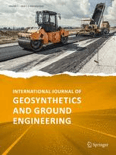
International Journal of Geosynthetics and Ground Engineering
Elevating the standards of geosynthetic technology and engineering practices.International Journal of Geosynthetics and Ground Engineering, published by SPRINGER INT PUBL AG, stands as a vital resource for the fields of civil engineering and materials science, particularly in the study and application of geosynthetics. With an ISSN of 2199-9260 and E-ISSN 2199-9279, this journal has established itself in the academic community, achieving a commendable position in Q2 category rankings for both Civil and Structural Engineering and Polymers and Plastics as of 2023. It ranks 134th in civil engineering and 77th in polymer science within Scopus, reflecting a respectable impact factor that emphasizes its influence in these disciplines. The journal covers a diverse range of topics, from innovative geosynthetic materials to groundbreaking engineering applications, and aims to foster an environment of collaboration and knowledge dissemination among researchers, professionals, and students. With its scope extending from 2015 to 2024, the International Journal of Geosynthetics and Ground Engineering is committed to pushing the boundaries of research and development in sustainable engineering practices, making it an essential publication for those interested in the future of geosynthetic technology.
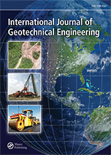
International Journal of Geotechnical Engineering
Elevating Standards in Soil Behavior and Geotechnical ProcessesThe International Journal of Geotechnical Engineering, published by Taylor & Francis Ltd, is a leading academic platform dedicated to advancing knowledge and research in the field of geotechnical engineering, environmental engineering, and soil science. With an ISSN of 1938-6362 and an E-ISSN of 1939-7879, this journal has established a credible presence since its inception in 2007, reflecting its commitment to academic excellence through rigorous peer-reviewed research. Ranking in the Q2 quartile across several categories—including Environmental Engineering and Geotechnical Engineering—this journal boasts impressive Scopus rankings, placing it among the top publications in its disciplines. The journal seeks to foster a deeper understanding of soil behavior, geotechnical processes, and their environmental impacts, making it an essential resource for researchers, professionals, and students alike. While it operates under a subscription model, the wealth of knowledge and innovative findings disseminated within its pages are indispensable for anyone engaged in this vital field. With an expanding focus on interdisciplinary research and practical applications, the International Journal of Geotechnical Engineering continues to play a pivotal role in shaping the future of engineering practices worldwide.

Geotechnical and Geological Engineering
Shaping the Landscape of Geotechnical KnowledgeGeotechnical and Geological Engineering, published by SPRINGER, is a premier journal dedicated to advancing the field of geotechnical and geological engineering. With a strong reputation demonstrated by a robust impact factor and notable Scopus rankings, the journal positions itself in the top quartile of categories such as Architecture and Geotechnical Engineering, making it an essential resource for researchers and practitioners alike. Established in 1991 and continuing through 2024, it provides a platform for original research that addresses the pivotal challenges in soil science, geology, and engineering geology. Although it does not offer open access, it remains accessible through institutional and personal subscriptions, ensuring that academic scholars, industry professionals, and students can engage with high-quality, peer-reviewed content. The journal's commitment to disseminating innovative findings and fostering interdisciplinary dialogue underscores its vital role in shaping future developments in engineering and environmental sustainability.

International Journal of Engineering Research in Africa
Empowering Engineering Innovation Across AfricaThe International Journal of Engineering Research in Africa is a pivotal academic resource for researchers, professionals, and students interested in the multifaceted field of engineering within the African context. Published by TRANS TECH PUBLICATIONS LTD, this journal facilitates the dissemination of innovative research, covering a myriad of topics in engineering, from advanced materials to sustainable practices. With an ISSN of 1663-3571 and E-ISSN 1663-4144, this publication not only fosters scholarly communication but also contributes to the global engineering discourse, as evidenced by its current Q3 ranking in the Engineering (miscellaneous) category in 2023. Operating from its base in Switzerland, the journal has been actively publishing since 2010 and continues to play a vital role in the advancement of engineering knowledge, particularly in the African landscape. Although it does not offer an open access model, the journal's commitment to quality research ensures that it remains a valuable asset for those seeking to understand and innovate within the engineering sector. Its integration in Scopus with a rank of #175 out of 307 in General Engineering further underscores its relevance and impact in the engineering community.